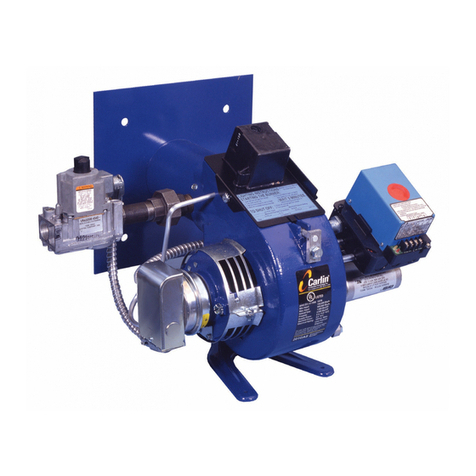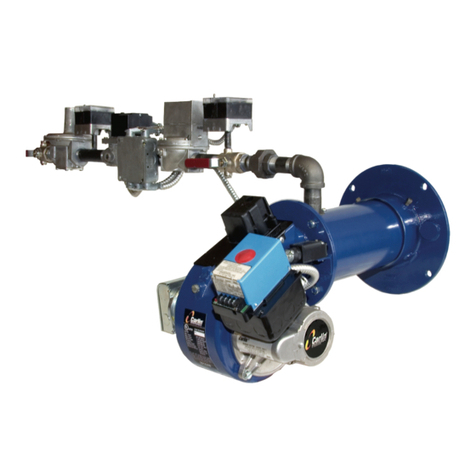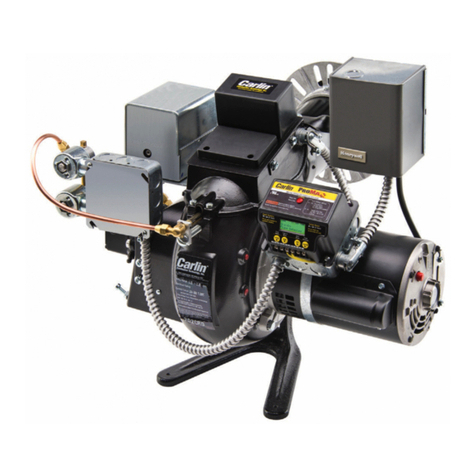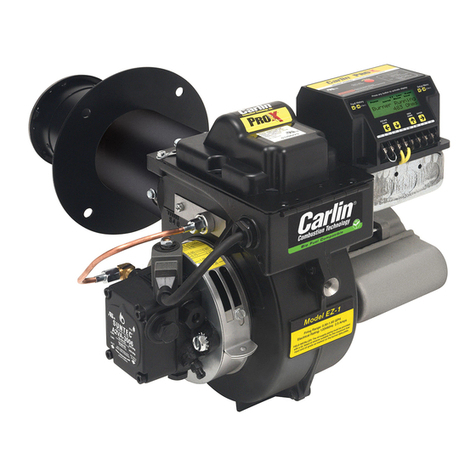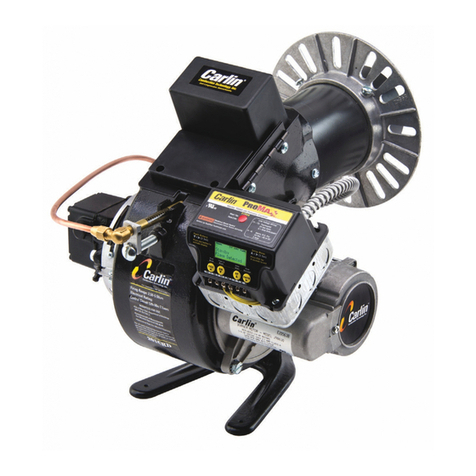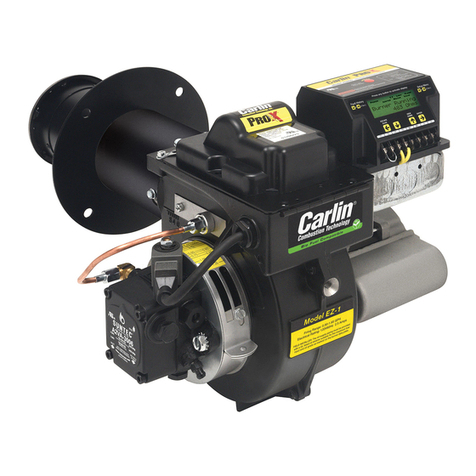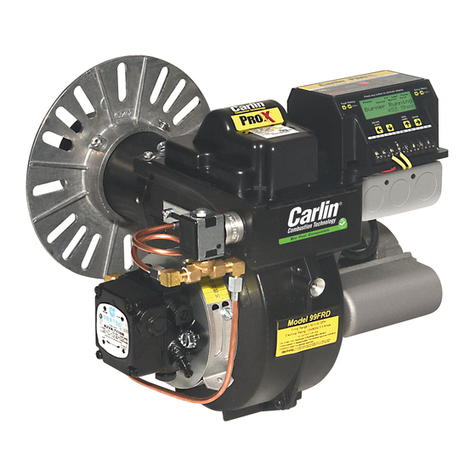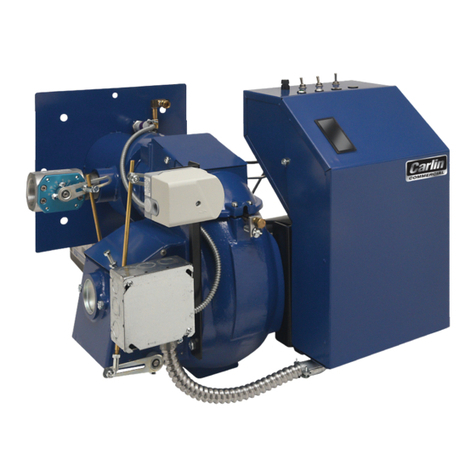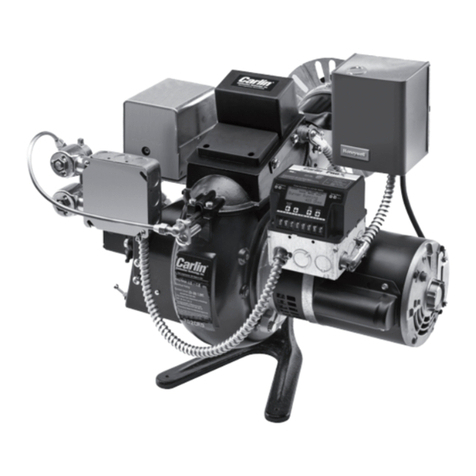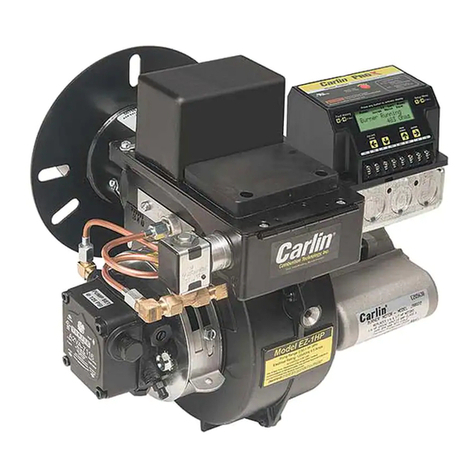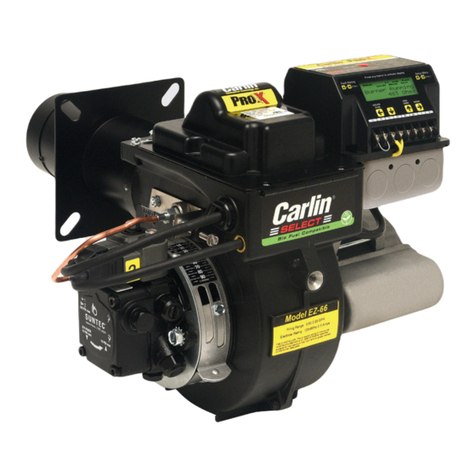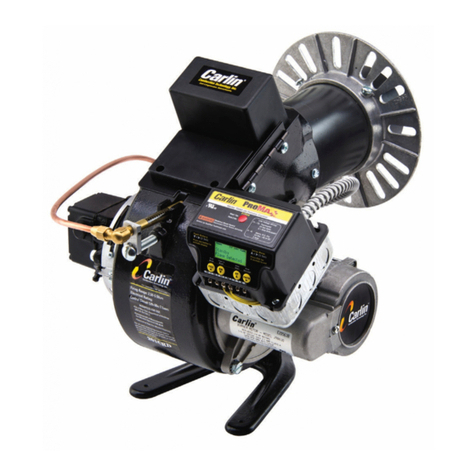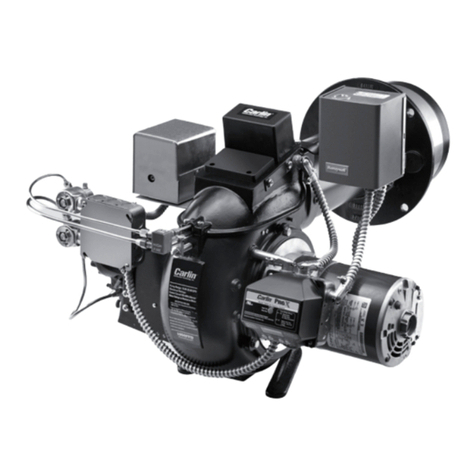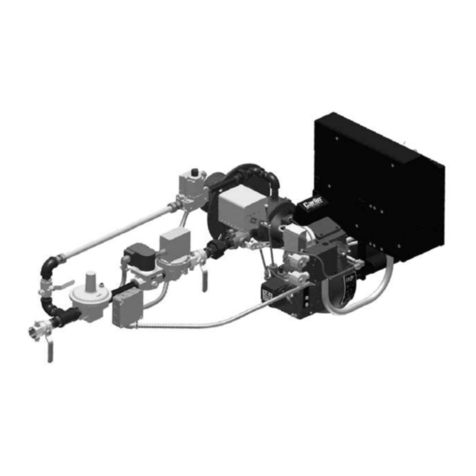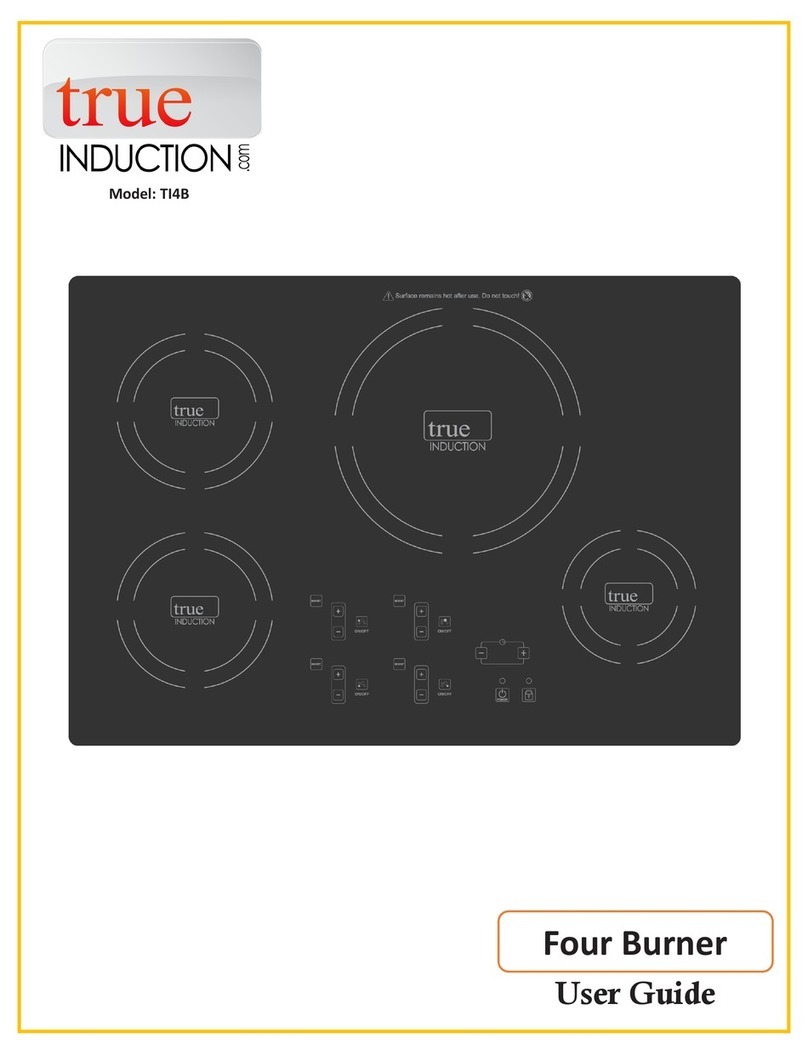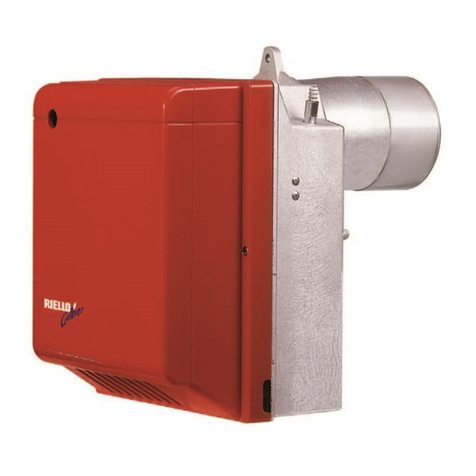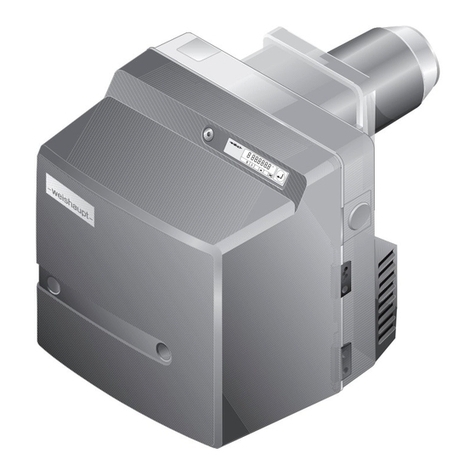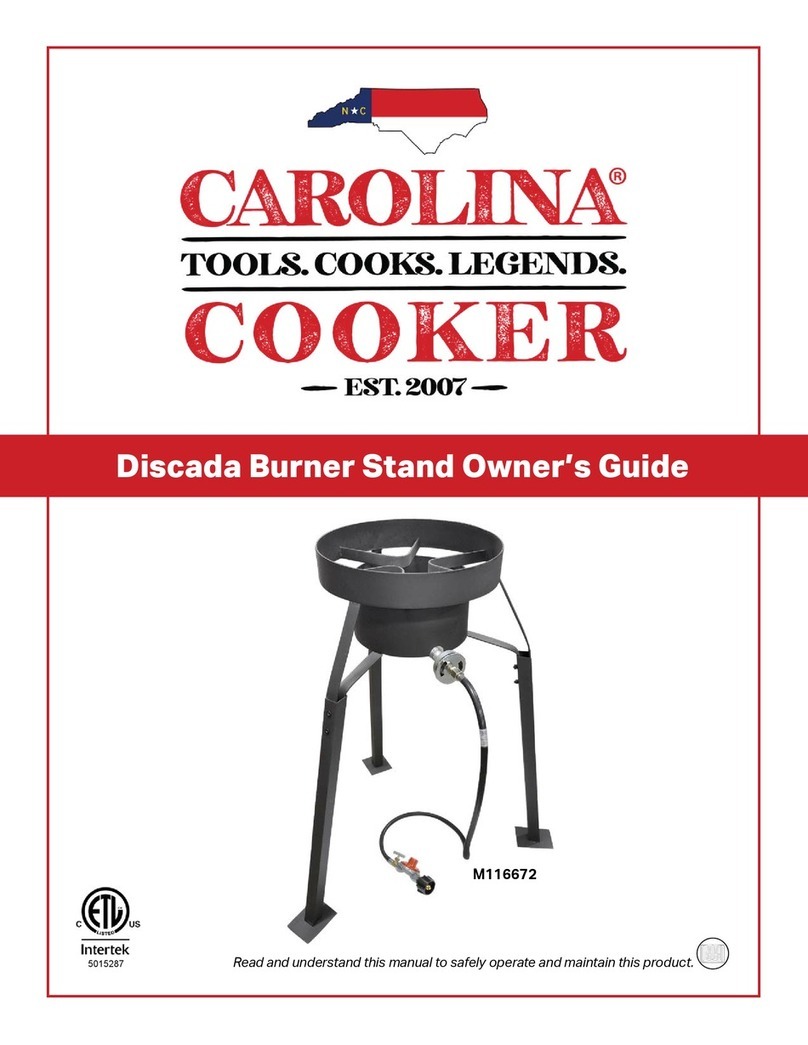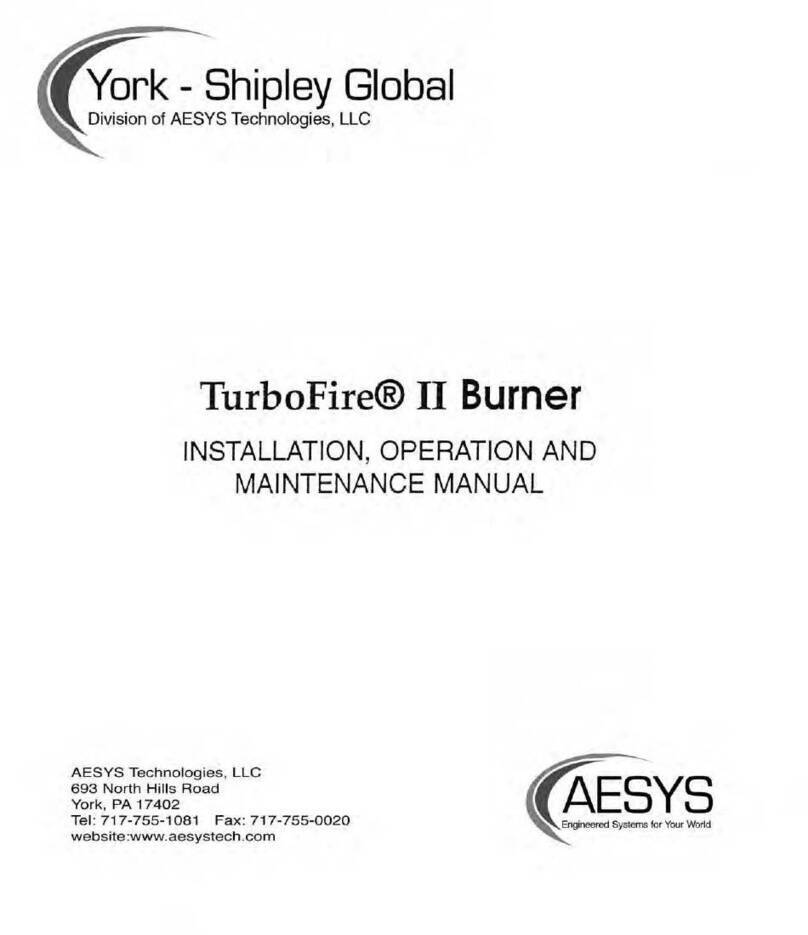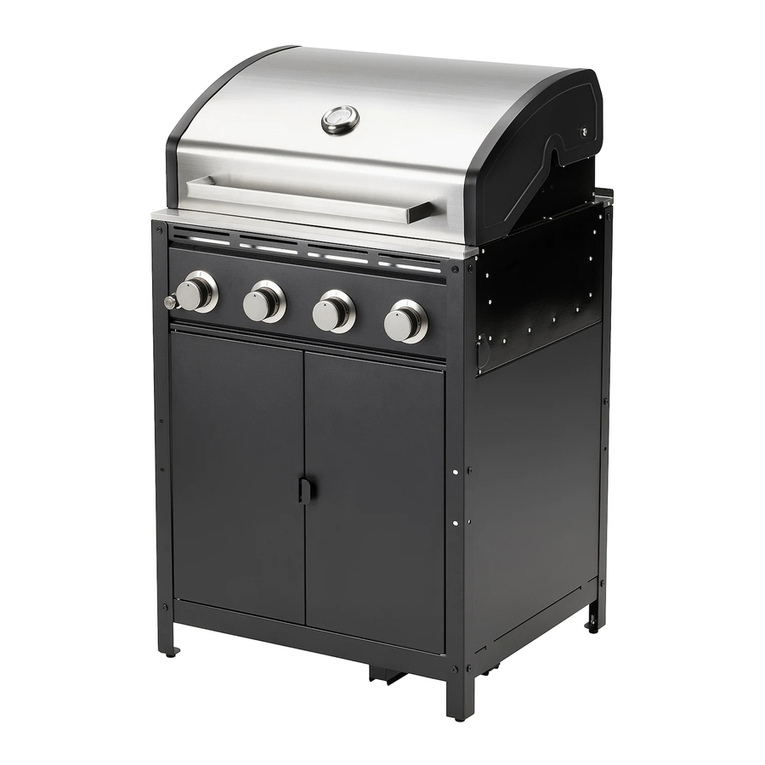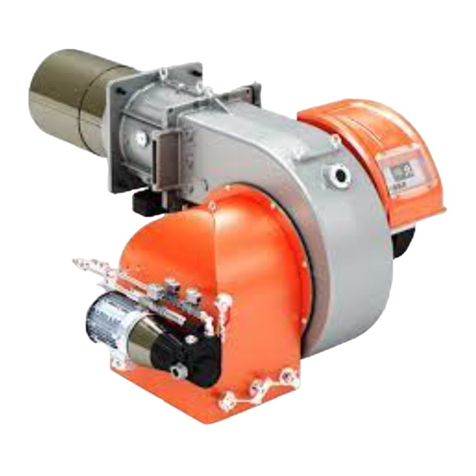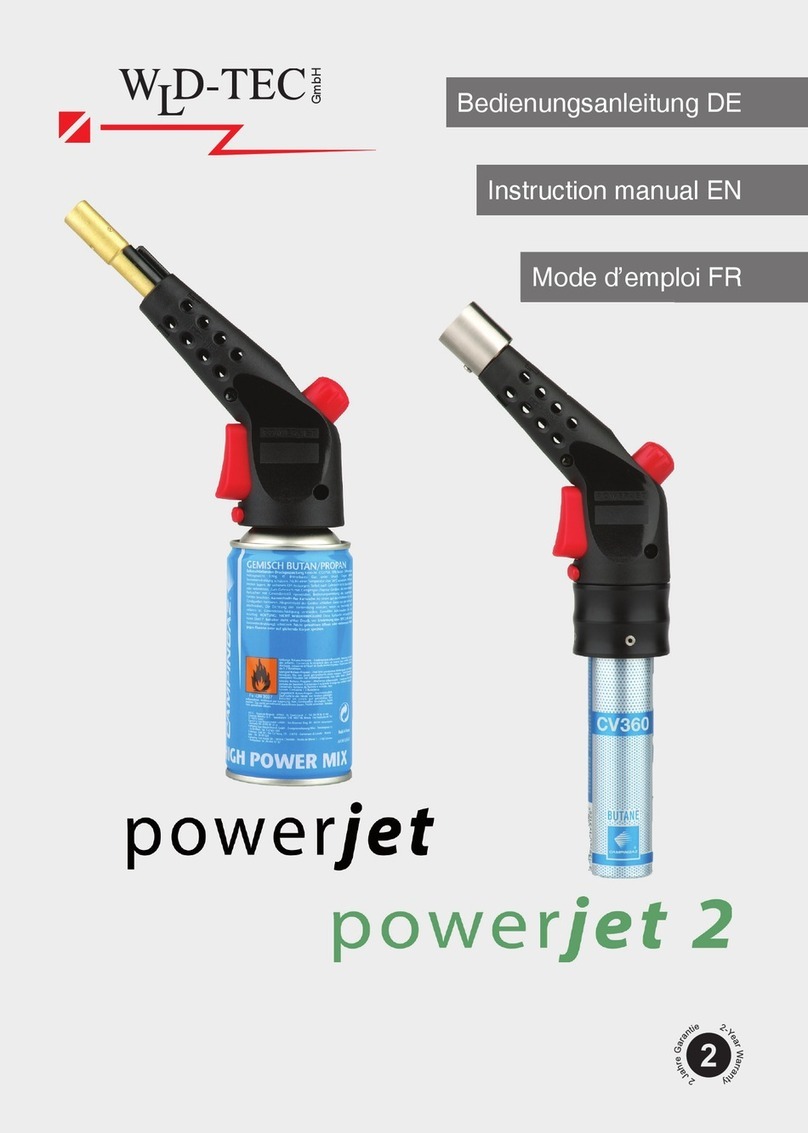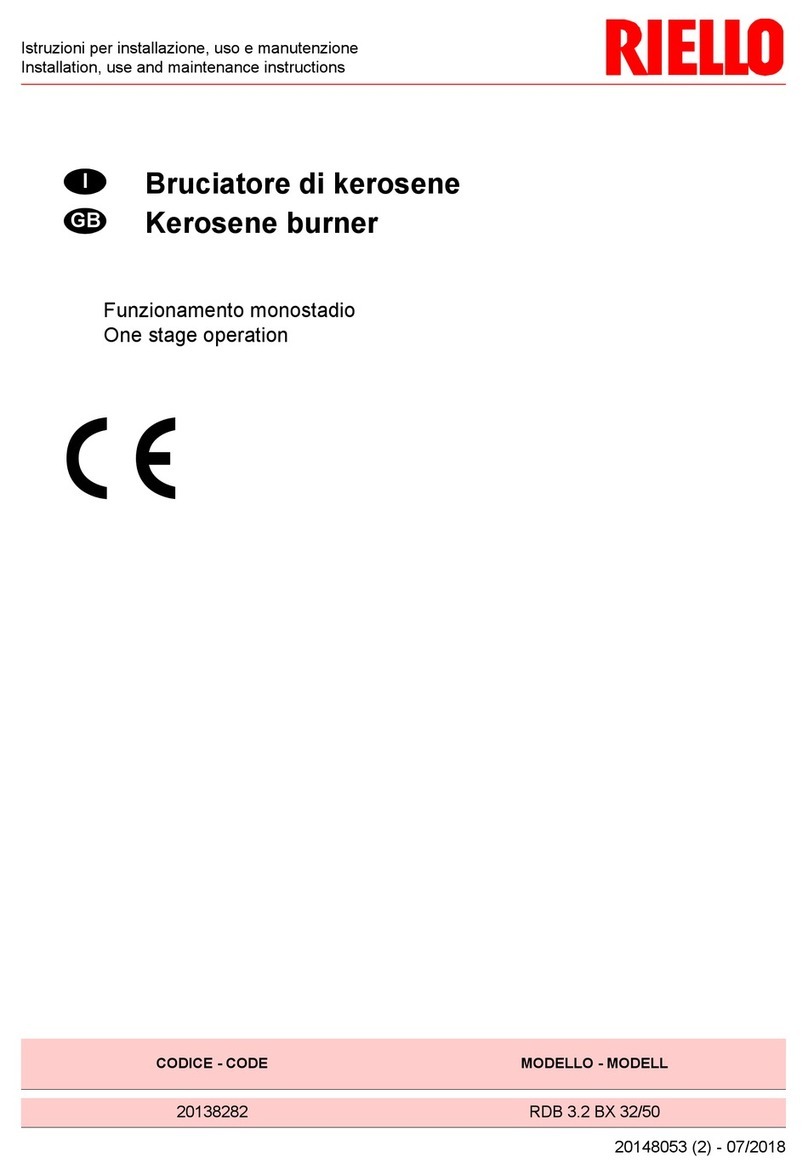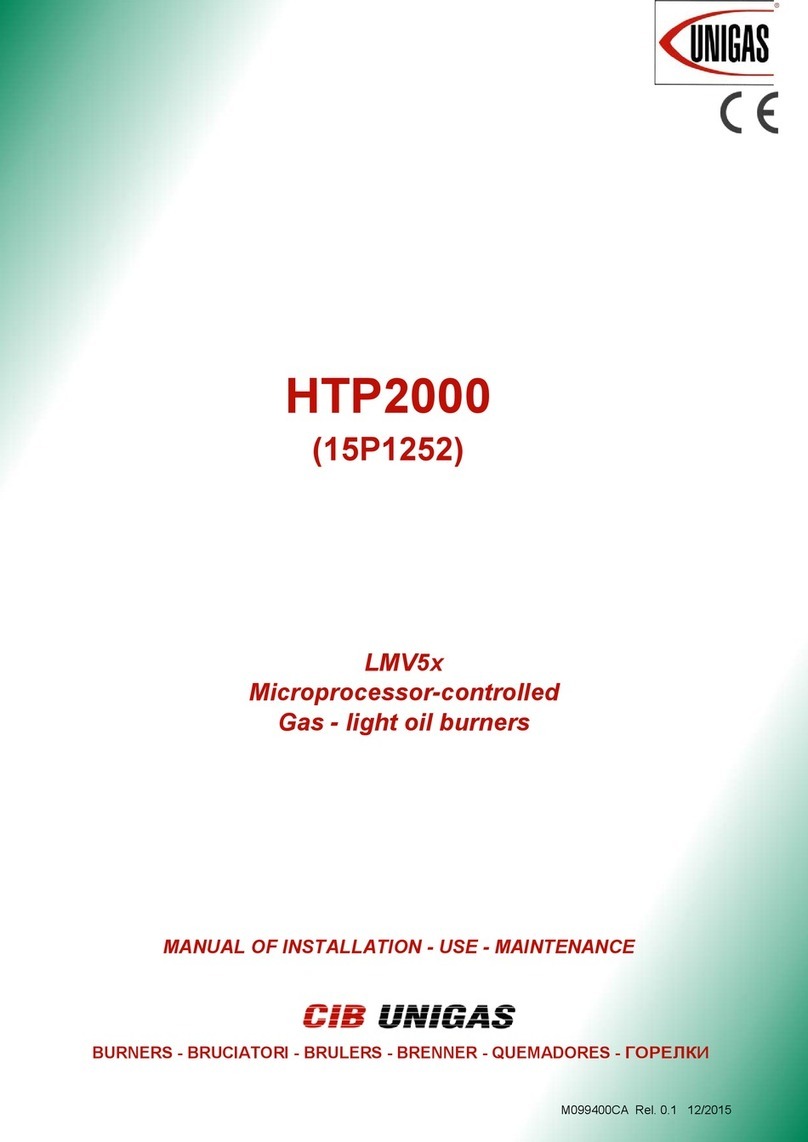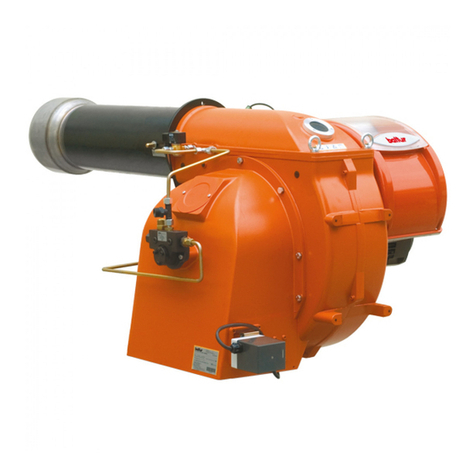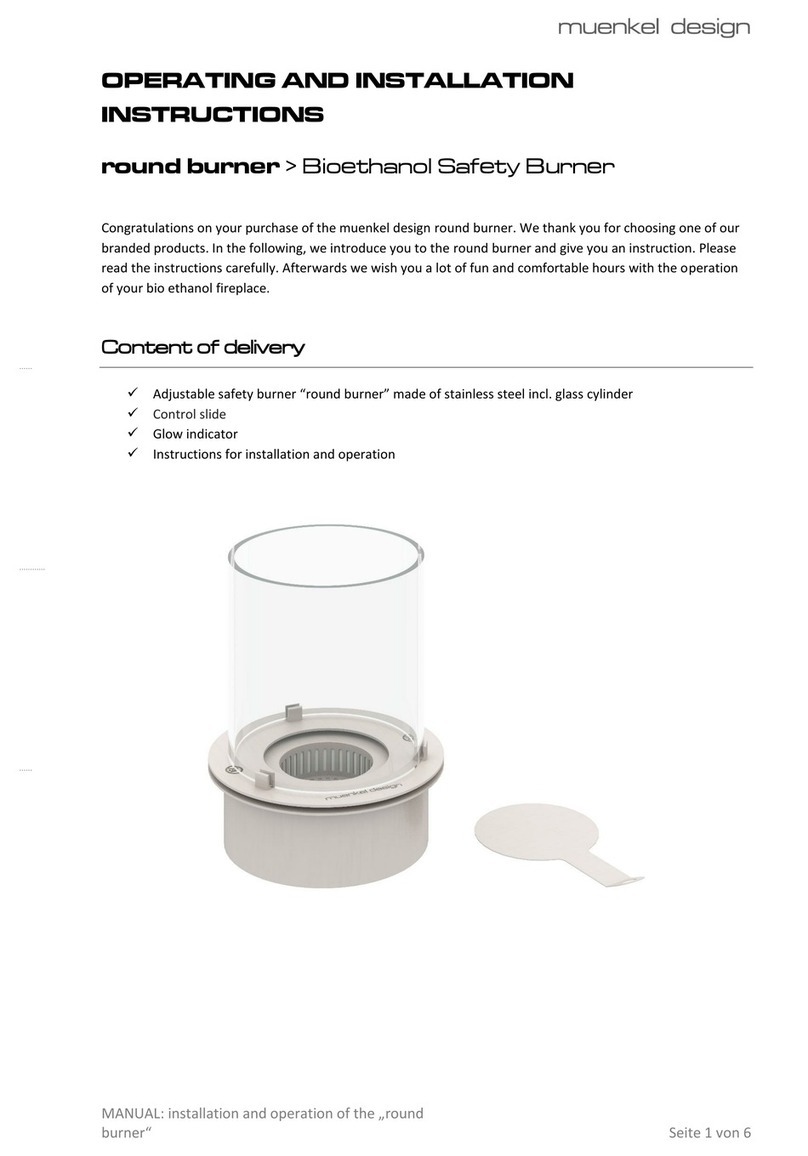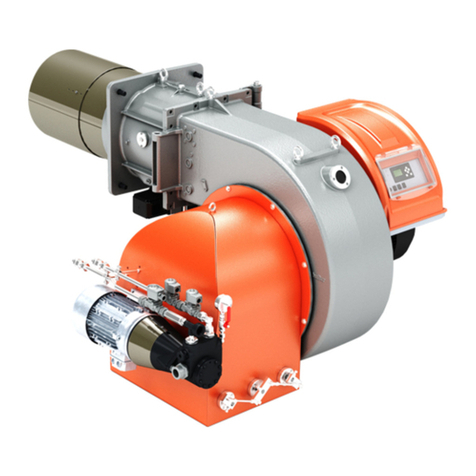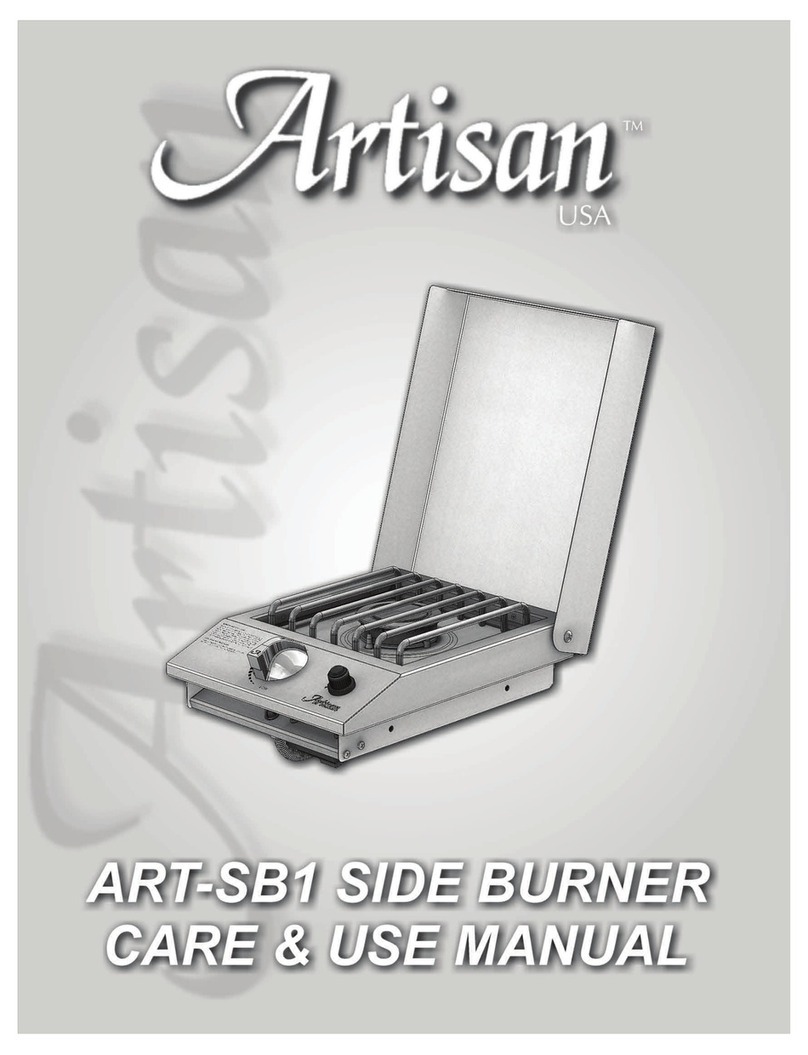
Model 99FRD, 100CRD, & 102CRD oil burners — Instruction manual
Carlin part number MN99102 Rev. 08/20/08 – 5 –
Combustion/ventilation air checklist
The burner may operate successfully under momentary
downdraft conditions, but sustained downdraft is unsafe.
This can occur with an inadequate or incorrectly installed
chimney/vent. It can also occur in rooms/buildings equipped
withexhaustfansorunsealedreturnairducts.Alwayscheck
operation of the burner under all conditions to verify vent system
operates correctly. You may have to interlock the burner with
exhaust fans to shut burner off when fan operates; or provide
make-up air to the appliance room sufficient to prevent any
negative pressure in the space. Failure to correct downdraft
or negative room pressure operation could result in severe
personal injury, death or substantial property damage.
❏ Verify that openings are unobstructed.
❏ Verify that appliance space and air source spaces are free of:
• Gasolineorotherammableliquidsorvapors.
• Combustiblematerials.
• Aircontaminantsandchemicals,suchaslaundryproducts,paint,thinner,
varnish, etc.
❏ Conrmwiththebuildingownerthattheareawillbekeptfreeofthese
materials at all times and that air openings will be kept unobstructed.
2. Prepare site • assemble burner • mount burner (continued)
Verify combustion chamber
Chamber dimensions and construction
• Ifretrottingtheburnertoanappliance,installtheburnerinaccordance
with the appliance instruction manual, when available. If no specific
application data is available from the appliance manufacturer, read the
guidelinesinFigure1,page6,tocheckwhethertheburnerislikelyto
work acceptably in the application.
Verify clearances
Verify that the burner/appliance will maintain all clearances from combus-
tible construction and clearances for service/maintenance as required in
the appliance manual and applicable codes.
Verify that the vent system components maintain all necessary clearances
to combustible construction, including the correct design of thimbles and
insulation where penetrating combustible walls.
• IllustrationsAtoFinFigure1showdifferentchambercongurations
with and without refractory linings. The chamber dimensions listed in
Figure 1 depend on whether the chamber is lined or water-backed.
• Donotattempttoretheburnerinachamberwithdimensionssmaller
thanshowninFigure1,page6,unlesstheapplicationhasbeenspeci-
callytestedandlistedbytheappliancemanufacturerand/orCarlin.
• Chambers with dimensions larger than shown in Figure 1, page 6,
should not have much effect on combustion/performance.
General guidelines
• Cleanallapplianceuesandheatingsurfacesthoroughly,removingall
soot and scale.
• Sealalljointsandgapsusingfurnacecementtopreventexcessair
infiltration.
The99FRDwrapped-shieldairtubemustbeusedonlyin
wet-base combustion chamber applications.
Using chamber linings and lightweight chambers
• Whenusingrefractorylinersorlightweightchambers,useinsulating-
typerefractoryrated2300°Fminimum.
• Youmustinstallatargetwalllinerifamelengthisclosetothelength
of the chamber.
• Useaoorlinerwhenpossible.Theoorlinerwillimproveringinmost
applications.Extendoorliner3to4inchesupsidewall.
• Targetwallliners—Corbelthetopoftargetwallliners1½to2½inches
deepandextendatleast3to4inchesabovethecenteroftheame.
• Usepre-formedchamberlinerswhenavailable.
• Forringratesbelow0.75GPH,itisbesttoapplyinarefractory-lined
orstainlesstube(designedforapplication)chamber.Liningtheoor
and target wall of the chamber with lightweight insulating refractory
will accomplish the same.
• Whenconversionringcoal-redunits,installacombustionchamberin
the ashpit area, or fill ashpit with sand up to 2 inches above the “mud
ring” of a boiler (firing through the door). Install a lightweight refractory
lineronthetargetwallasinFigure1F,page6.Makesuretheminimum
dimensions comply with those for Figure 1F.
